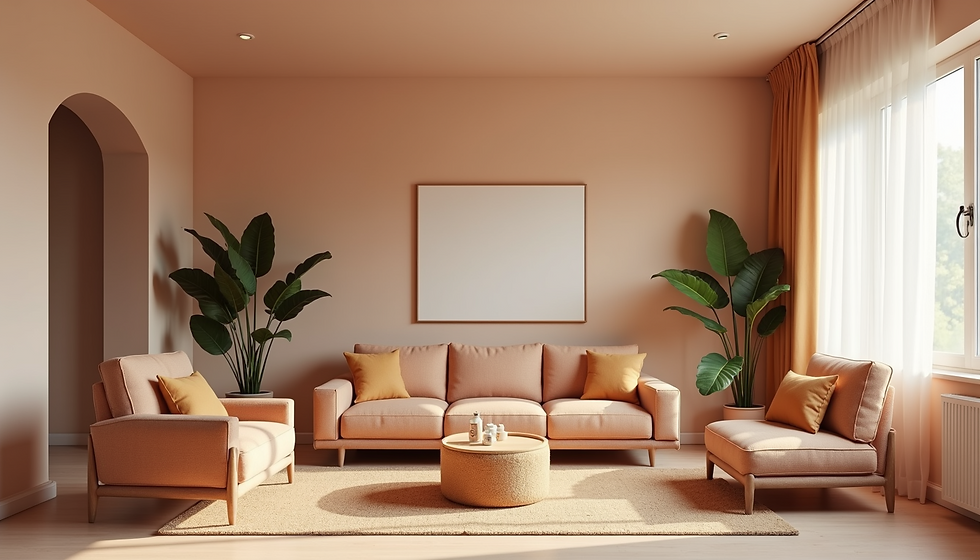Understanding the Steps to Achieve Your Dream Interior
- Be-Studio

- Oct 27
- 4 min read
Creating your dream interior is an exciting journey that transforms your living space into a reflection of your personality and lifestyle. However, achieving this vision requires careful planning, creativity, and a clear understanding of the design steps involved. Whether you are starting from scratch or refreshing an existing space, knowing the right approach can make the process smoother and more enjoyable.
The Importance of Following Design Steps
When it comes to interior design, skipping steps or rushing can lead to costly mistakes and a final result that doesn’t meet your expectations. Following a structured set of design steps helps you stay organised, manage your budget effectively, and ensure every detail aligns with your vision.
For example, starting with a clear concept and mood board can guide your choices in furniture, colours, and accessories. Without this, you might end up with mismatched elements that clash rather than complement each other. Additionally, understanding the design steps allows you to communicate better with professionals, such as interior designers or contractors, ensuring your ideas are realised accurately.
By embracing these design steps, you create a roadmap that leads to a cohesive and functional space tailored to your needs.

Key Design Steps to Consider for Your Interior Project
Embarking on an interior design project involves several important stages. Here are some essential design steps to keep in mind:
Define Your Style and Needs
Start by identifying your preferred style—be it contemporary, traditional, minimalist, or eclectic. Consider how you use the space daily and what you want to improve or change.
Set a Realistic Budget
Knowing your budget upfront helps prioritise spending and avoid overspending on unnecessary items.
Create a Mood Board
Collect images, fabric samples, and colour swatches that inspire you. This visual tool helps clarify your vision.
Measure Your Space
Accurate measurements are crucial for selecting furniture and planning layouts.
Plan the Layout
Decide on the placement of furniture and key elements to maximise flow and functionality.
Choose Materials and Finishes
Select flooring, wall treatments, and textiles that complement your style and lifestyle.
Source Furniture and Accessories
Shop for pieces that fit your design and budget, balancing aesthetics and comfort.
Implement Lighting Solutions
Good lighting enhances mood and usability. Consider ambient, task, and accent lighting.
Add Personal Touches
Incorporate artwork, plants, and decorative items that reflect your personality.
10. Review and Adjust
After setting up, live in the space for a while and make tweaks as needed.
These design steps provide a comprehensive framework to guide your project from concept to completion.
What are the 10 steps in the interior design process?
Understanding the detailed steps in the interior design process can help you navigate your project with confidence. Here is a breakdown of the 10 key steps:
Initial Consultation
Discuss your goals, preferences, and budget with a designer or plan on your own.
Concept Development
Develop a design concept that includes style, colour schemes, and overall mood.
Space Planning
Create floor plans and layouts to optimise space usage.
Design Presentation
Review mood boards, sketches, or 3D renderings to visualise the design.
Material Selection
Choose finishes, fabrics, and materials that align with the concept.
Furniture and Fixture Selection
Select pieces that fit the design and functional requirements.
Budget Finalisation
Confirm costs and adjust selections to stay within budget.
Project Scheduling
Plan timelines for ordering, delivery, and installation.
Implementation
Oversee the execution of the design, including painting, furnishing, and decorating.
10. Final Review and Styling
Make final adjustments and add finishing touches to complete the space.
Following these steps ensures a thorough and organised approach to creating your dream interior.

Practical Tips to Make Your Interior Design Journey Successful
To make the most of your interior design journey, consider these practical tips:
Start Small
If you’re new to interior design, begin with one room to avoid feeling overwhelmed.
Prioritise Functionality
Beautiful spaces should also be practical. Think about storage, lighting, and comfort.
Mix Old and New
Combine vintage pieces with modern elements for a unique and personalised look.
Use Colour Wisely
Choose colours that create the desired mood and complement natural light.
Don’t Forget Scale and Proportion
Ensure furniture and decor fit the size of your room to maintain balance.
Invest in Quality Basics
Spend more on essential items like sofas and beds, and save on accessories.
Be Patient
Good design takes time. Allow yourself to live with the space and make changes gradually.
By applying these tips alongside the design steps, you can create a space that is both beautiful and functional.
How Professional Help Enhances Your Design Steps
While DIY projects can be rewarding, hiring a professional can elevate your interior design experience. Experts bring knowledge of trends, materials, and spatial planning that can save you time and money.
A professional can guide you through the interior design process, helping you avoid common pitfalls and ensuring your vision is realised to its fullest potential. They also have access to trade-only resources and can coordinate with contractors, making the entire project more efficient.
If budget allows, consider consulting a designer for at least the initial stages or for specific tasks like space planning or colour consultation.
Bringing Your Dream Interior to Life
Achieving your dream interior is a rewarding process that combines creativity, planning, and practical decision-making. By understanding and following the essential design steps, you can transform any space into a place that feels truly yours.
Remember to take your time, stay organised, and enjoy the journey of making your home a reflection of your style and personality. Whether you choose to work independently or with a professional, these steps will guide you toward a successful and satisfying interior design project.



